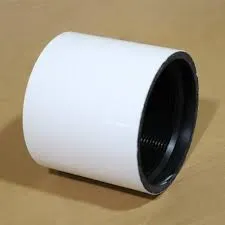- Afrikaans
- Albanian
- Amharic
- Arabic
- Armenian
- Azerbaijani
- Basque
- Belarusian
- Bengali
- Bosnian
- Bulgarian
- Catalan
- Cebuano
- Corsican
- Croatian
- Czech
- Danish
- Dutch
- English
- Esperanto
- Estonian
- Finnish
- French
- Frisian
- Galician
- Georgian
- German
- Greek
- Gujarati
- Haitian Creole
- hausa
- hawaiian
- Hebrew
- Hindi
- Miao
- Hungarian
- Icelandic
- igbo
- Indonesian
- irish
- Italian
- Japanese
- Javanese
- Kannada
- kazakh
- Khmer
- Rwandese
- Korean
- Kurdish
- Kyrgyz
- Lao
- Latin
- Latvian
- Lithuanian
- Luxembourgish
- Macedonian
- Malgashi
- Malay
- Malayalam
- Maltese
- Maori
- Marathi
- Mongolian
- Myanmar
- Nepali
- Norwegian
- Norwegian
- Occitan
- Pashto
- Persian
- Polish
- Portuguese
- Punjabi
- Romanian
- Russian
- Samoan
- Scottish Gaelic
- Serbian
- Sesotho
- Shona
- Sindhi
- Sinhala
- Slovak
- Slovenian
- Somali
- Spanish
- Sundanese
- Swahili
- Swedish
- Tagalog
- Tajik
- Tamil
- Tatar
- Telugu
- Thai
- Turkish
- Turkmen
- Ukrainian
- Urdu
- Uighur
- Uzbek
- Vietnamese
- Welsh
- Bantu
- Yiddish
- Yoruba
- Zulu
Understanding the Differences Between Well Tubing and Casing in Drilling Operations
Understanding Well Tubing and Casing Essential Components in Drilling Operations
In the oil and gas industry, the terms well tubing and casing refer to crucial components of a drilling operation, playing pivotal roles in ensuring the safe and efficient extraction of hydrocarbons. Both components serve different purposes but are integral to the integrity of the well structure and overall production.
Casing The Protective Barrier
Casing is a series of steel pipes that are installed in the wellbore after drilling. Its primary function is to provide structural support to the well, preventing the walls from collapsing and protecting the surrounding environment from contamination. Casing also serves as a barrier to isolate different pressure zones within the ground, ensuring that fluids do not migrate between layers.
The process of casing involves several phases, starting with the drilling of a well to a predetermined depth, followed by the installation of the casing. Once the casing is set, cement is pumped between the casing and the wellbore to create a seal, which further strengthens the structure and provides additional isolation. Different types of casing, such as surface casing, intermediate casing, and production casing, are used depending on the well's specifications and the geological conditions encountered.
Tubing The Conduit for Production
well tubing and casing

On the other hand, well tubing is a smaller diameter pipe that runs through the casing and extends to the production zone. Its primary purpose is to transport produced fluids — oil, gas, and water — from the reservoir to the surface. Tubing is crucial for maintaining efficient production rates and is designed to withstand various forces and pressures, including the corrosive nature of the fluids being produced.
The tubing string is typically installed after the completion of the well and can be replaced as needed during the life of the well. Depending on the production conditions, operators may choose from various types of tubing materials, such as carbon steel or corrosion-resistant alloys, to ensure longevity and reliability.
The Importance of Well Design
In well design, the selection of appropriate casing and tubing is critical. Engineers must carefully consider factors such as depth, pressure, temperature, and the type of fluids to be produced when determining the specifications for these components. Properly designed cased and tubed wells not only enhance production efficiency but also mitigate risks associated with environmental contamination and blowouts.
In conclusion, well tubing and casing are foundational elements in the field of oil and gas extraction. Their proper implementation is vital for ensuring safe and efficient operations while protecting the environment. As technology and materials continue to evolve, these essential components will play an even more significant role in the sustainability of the industry. By understanding their importance, stakeholders can better appreciate the complexities involved in making each well a success.
-
Tubing Pup Joints: Essential Components for Oil and Gas OperationsNewsJul.10,2025
-
Pup Joints: Essential Components for Reliable Drilling OperationsNewsJul.10,2025
-
Pipe Couplings: Connecting Your World EfficientlyNewsJul.10,2025
-
Mastering Oilfield Operations with Quality Tubing and CasingNewsJul.10,2025
-
High-Quality Casing Couplings for Every NeedNewsJul.10,2025
-
Boost Your Drilling Efficiency with Premium Crossover Tools & Seating NipplesNewsJul.10,2025







